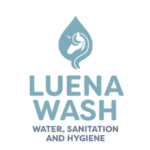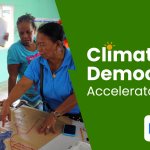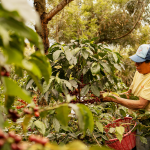Photo: agroindonesia.co.id, https://ugm.ac.id/en/news/20087-social-forestry-for-national-food-sovereignty/
Updated and Refined by Happy Tarumadevyanto – happy.devyanto@environmental.asia
The gap between permit issuance (Legal Access) and business success (Income Generation) in Indonesia’s Social Forestry (PS) program is a complex and multidimensional issue.
Expectations regarding the ability of forest farmer groups to immediately become viable (profitable and independent) business entities are often too high when measured solely by strict market metrics.
The initial focus of the PS program was Agrarian Reform (redistribution of management access), and the phase of Community-Based Forestry Business Development faces many unresolved constraints.
Here are the main reasons why many PS groups are not yet ready with a forestry business model:
🌳 Key Problems for PS Groups Post-Permit
The core of this issue is the Gap in Mentorship and Resources after legal permits have been secured.
1. Limitations in Institutional Capacity and Human Resources (Internal)
| Issue | Explanation |
| Weak Organizational Capacity | Many newly formed Social Forestry Business Groups (KUPS) tend to lack robust institutional structures, have a poor understanding of group governance, or are susceptible to local elite capture, which reduces transparency. |
| Minimal Business Skills | The majority of KUPS members are traditional forest farmers who are skilled in cultivation or managing wood/non-wood forest products, but lack experience in aspects such as: financial management, post-harvest technology, and marketing. |
| Immature Business Plans | Many groups obtain permits without a preceding comprehensive and realistic Management Plan and Business Plan for the 25−35 year period of the permit they hold. |
2. Obstacles to Resource Access (External)
| Issue | Explanation |
| Minimal Access to Capital | This is a crucial constraint. PS groups often struggle to access formal financing schemes (such as KUR or banking) because they are deemed high-risk or lack collateral. Budget allocation from central and regional governments for post-license support is often very low or inconsistent. |
| Limited Technical Assistance | The number of field facilitators (TPL) or forestry extension workers is disproportionate to the number of PS permits issued. Consequently, the intensive mentorship needed (especially in the first 1−5 years post-permit) is sporadic or fails to reach all groups. |
| Market Access and Downstreaming | Small-scale forestry products often face challenges in quality and quantity to meet modern market standards (e.g., SVLK wood legality certification for small-scale timber). Groups tend to sell their harvest unprocessed (raw) through middlemen, which depresses their profit margins. |
🎯 Are Our Expectations Overstated?
Yes, there is an indication that our expectations for PS groups to immediately become profit-oriented business units are overstated and misaligned with reality.
1. The Business Model is Not Only Profit
The PS program has a dual objective (Dual−Goal):
- Socio-Ecological Goal: Reducing poverty, resolving tenurial conflicts, and maintaining forest sustainability.
- Economic Goal: Improving welfare and income generation.
Suppose the sole benchmark for success is profit, as is the case with a corporation. In that case, we ignore the social and environmental benefits already generated (PS has been proven to increase forest cover in some areas and reduce conflict).
2. Scale and Institutional Gap
Small-scale forestry enterprises run by communities cannot be compared to corporate Industrial Timber Plantations (HTI). The need for capital, technology, and the harvesting cycle of forest commodities (e.g., timber) require a long-term cycle (decades), so initial income generation relies more on Non-Timber Forest Products (NTFPs) or agroforestry.
The Need: The PS business model should focus more on a multi-business forestry model that integrates various income sources (agroforestry, environmental services/ecotourism, NTFPs), which requires a more integrated policy framework and consistent financial support.
Core Conclusion:
The main issue is not the failure of the farmers, but the failure of the post-permit support system. The program has succeeded in the rights redistribution phase but has not sufficiently prioritized the consistent provision of resources, capital, and mentorship to transform those legal rights into sustainable and independent business capacity.











